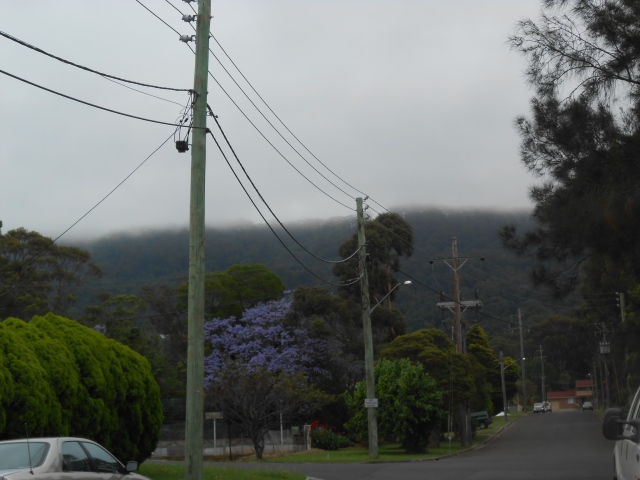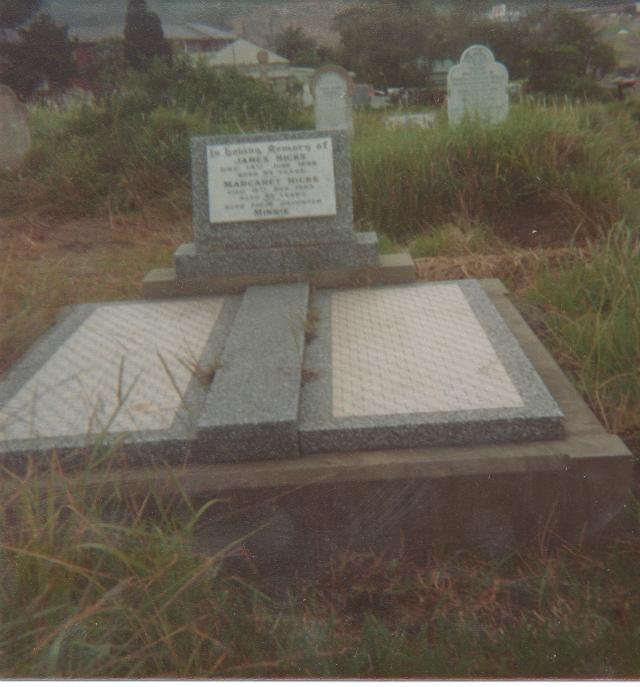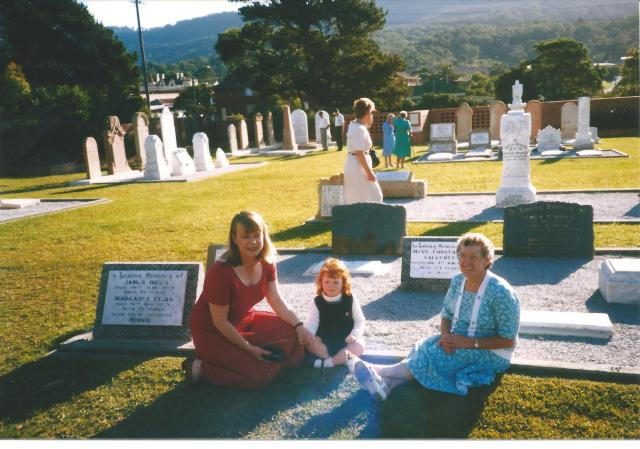Our Hicks family in Australia probably dates from around 1802, and was an early pioneering White Anglo Celtic family of the Illawarra in NSW, in the mid 19th Century, but had been present there for a time from as early as 1826. Quite a few members are also connected to the First Fleet in 1788, like James Hicks‘ older and younger sisters Sarah and Elizabeth.
This site is mainly focused on Margaret Howe‘s eldest son, James Hicks and his family – however some details are also shared on the site about his parents, step-father, siblings and their descendants.
Hicks Family members are scattered up and down virtually the entire eastern seaboard of Australia from Thursday Island to Melbourne and across to Tasmania. Many stayed in the Illawarra. Other strongholds are in the Sydney area, Lismore and Murwillumbah – (click here for details and also here for details of various family branches). And many others moved to the western areas as well. There is a lot of information – so use the Site Index.
We are finding out more and more about our family’s early years almost week by week. Internet and social media technology make it so much easier these days.
Over the last two hundred years, we have evolved from being White Anglo Celtic, to a family with members from quite a few other countries and cultures, such as the Lock Lee‘s who hailed from Murwillumbah and the Wah Shang‘s from Cairns. Like all families, we have had our triumphs and tragedies – joy and sadness. And so many stories, some long buried and almost forgotten. Hopefully many will be shared, and there’s going to be some that probably couldn’t, or shouldn’t, be written down! People in our family like James Hicks’ older sister, Sarah, were definitely no shrinking violets !
More Details on James Hicks’ Parents :
Margaret Howe was born in 1778 in Surrey, England, and died on 15-12-1837 in Castlereagh. She was tried 9 Aug 1802 at Guildford, Surrey, and sentenced to 7 years, however her crime is as yet unknown.
The crimes most frequently committed which resulted in Transportation, were stealing, larceny and burglary – and 50% of the total were in some way theft related. The largest numbers of convict ship departures seem to have between approximately 1820 and 1850. All up, about 162,000 people, in 802 ships, had been transported to Australia in the 90 years from 1788 and 1868 – convicts no longer came to NSW from 1850, Van Diemen’s Land from 1853, and Western Australia after 1868.
Margaret was transported on the Experiment, (carrying almost entirely female convicts), which sailed with the Coromandel (which carried the male convicts). Initially the Experiment left on 4.12.1803, but was damaged, and had to return to Cowes for repairs, then finally leaving 2.1.1804. On arriving in Sydney 12.6.1804, there were strong winds and the ship could not be landed for some days. See also Australian Town & Country Journal 3.1.1891 for list of ships that arrived from the Establishment of the NSW Colony until 31.12.1817. Apparently less convicts were sent to Australia during 1801-1805 because a lot of the war ships were tied up in the Napoleonic War, and so could not escort the convict ships.
Brief details of the ship’s voyage are below
“The Experiment, 568 ton was built at Stockton in 1798. She departed England on 4 December 1803 under master, Francis J Withers with 136 female convicts and 2 males. She encountered a violent gale in the Bay of Biscay and sustained considerable damage, springing the bowsprit and carrying away the main topgallant mast. In no condition to continue she limped back to Cowes for repairs. Sailing again on 2 January 1804. This time she encountered favourable weather except for adverse winds which kept her from entering Port Jackson for three days….
Arrival of the ‘Experiment’ on 12th June, Captain Withers. In sight since previous Thursday but could not get into the harbour because of strong winds. She brought 130 female convicts with 2 male convicts one of whom Anthony Rowson had previously escaped from the colony. She lost 4 or 5 women who were prisoners and 2 wives of free settlers. The Experiment departed England 2nd January. Damaged in a violent gale in the Bay of Biscay. Arrived at Rio 8th March and departed there 8th April. Brought news of the death of William Balmain”
Source : Free Settler or Felon – this website has excellent information on the convict ships.
Over the years there has been some debate as to whether Richard James Hicks arrived as a convict, however it is the considered opinion of David Christian after examination of various sources – Musters, etc etc – that Richard James Hicks was the convict who arrived on the Canada in 1802. Other members of the Hicks family have also suggested that James’ father was another convict by the name of Hicks. Note – some people have suggested that James’ father is Zachary Hicks, however there is no real basis for this.
The details we believe are correct for James Hicks‘ father are as follows : Richard James Hicks was born in Kent England in 1785, and convicted on 13th of October in 1797 at Kent Quarter Sessions Maidstone. He was then amongst the convicts who departed in 1801 on the Canada, which arrived at Sydney in 1802 or another source has the arrival as late 1801.
There is a very very good web site Free Settler or Felon on the Convict Ships – it has a strong focus on Convicts who moved to the Hunter Valley but it goes well beyond that … information on the “Canada” :
“The Canada was built in Newcastle, England in 1801 and owned by F & T. Hurry. She carried 10 guns and a crew of 32 men.
The Canada arrived in Portsmouth 20th May 1801 and departed Spithead in convoy with the Nile and the Minorca on 21st June 1801.
She sailed via Rio de Janeiro, and arrived in Port Jackson on 14 December 1801 with 101 male prisoners. Also arriving on the Canada – 16 soldiers and 3 children; Six male passengers including James Blackman and sons James junior, Samuel, William and John, George Morrison, Charles Webb, William Small and Silaus Jenkins; 12 female passengers including Mary Pitt and 11 children.
James Blackman became Superintendent of Agriculture at Castle Hill (early 1800’s); District Constable at Richmond; Principal Superintendent of Government Stock; Chief Constable at Bathurst, November 1825 (CSI)
Sixteen men formed the military guard and were accompanied by three women.
Cargo brought by the Canada included 7 boxes of sugar, 3 cases shoes; 20 hams; cheese; cutlery, 2 cases toys, 4 pipes port wine; 2 parcels of whips; 15 pipes of rum; paint and oil; 3 puncheons coffee; a chest of haberdashery; 60 rolls tobacco; 2 boxes perfumery; mustard; slk; gin; corks; 15 barrells tar and a roll of green table cloths.
James Hardy Vaux arrived in the colony on the Minorca. He mentioned the Canada in his Memoirs: –
|
In May 1801, after an almost fatal attack of the gaol fever, his father, mother, and sisters took a final leave of him, and he was removed to Gravesend, and put on board the Minorca transport, which lay there with the Canada and Nile bound to Port Jackson. We dare say it will be new to the majority of our readers to learn how persons in this situation are treated ; and as the subject has just been raised in the House of Commons, it acquires greater importance. ‘Having entered the ship, we were all indiscriminately stripped (according to indispensable custom,) and were saluted with several buckets of salt-water, thrown over our heads by a boatswain’s-mate. After undergoing this watery ordeal, we were compelled to put on a suit of slop-clothing. Our own apparel, though good in kind, being thrown overboard. We were then double-ironed, and put between -decks, where we selected such births, for sleeping, &c. as each thought most eligible. The next day, we received on board forty-six more prisoners from the Hulks at Woolwich, and the Canada fifty. The Nile also took on board one hundred women, from the different gaols in Great Britain. The three ships then sailed for Spithead where, on our arrival, the Minorca and Canada had their numbers augmented, from the Hulks at Portsmouth, to one hundred men each. Every thing being now in readiness, we only waited for the convoy to assemble, with which we were to proceed to a certain latitude. – Literary Gazette – From the Memoirs of James Hardy Vaux |
Governor King in correspondence to the Transport Commissioners in February 1802 reported that the convicts of the Canada, Nile and Minorca transports were paid great attention by the Masters of those ships and all were landed in high health and fit for immediate labour.
In correspondence to the Duke of Portland Governor King noted that the indents of the convicts of the Canada and Nile were not sent in the ships. Of the settlers he remarked that some of them had settled and situations were being sought for the rest however ….I fear many of them will prove of the description of those mentioned in my despatch sent by way of China. Every means shall be used to make them useful to themselves, and as little as possible burthensome to the public. (HRA, Series 1 Vol. III p. 404)”.
Margaret Howe may or may not have married Richard Hicks, but it is unlikely that a marriage occurred. The muster of 1806 states Margaret is housekeeper to Richard Hicks, and the muster of 1814 states Margaret is wife of Richard Hicks. They were to have 3 children, Sarah Mary (1806), James (1810), and Ann (1816) – although some believe that there have been another child, William who born in 1813 and died in 1818 in Liverpool.
After 1818, Margaret Howe and Richard Hicks seem to have parted – details on any other relationships Richard James Hicks had after Margaret Howe are unknown. However it is believed that he died in Penrith in 1852.
In 1819 Margaret Howe married Thomas White (NSW BDM V18192350 3A/1819), with whom she had three more children, before her death in 1837 – Thomas White Jnr born in 1818 ; Elizabeth White born in 1821 in Campbelltown; and John (George) White born in Wollongong in 1826.
Margaret Howe‘s death in 1837 is recorded under her married name, Margaret White. More information on Margaret White(Howe) and her other children with Richard James Hicks and Thomas White can be found here.
The Family of James and Margaret Hicks
James Hicks had been variously named as James, Richard, Richard James, John and even William – which is confusing. But then errors still occurred with notifications to NSW Births Deaths and Marriages even in 2012, so it is no surprise that errors crept in nearly 200 years ago.
James appears to have left the Illawarra around the time when he was married, on 10.11.1834, at Castlereagh to Margaret Daley (daughter of Thomas Brain and Ann Daley) (1819-18.11.1905). He is listed in the 1841 Census as being in Pitt Town.
By 1842 James and Margaret, together with their 3 eldest children, had moved down to Russell Vale, (according to his death announcements in newspapers in 1895). In 1843, Anne, the first of their Illawarra-born children had arrived. Initially they lived on what was known as Hicks’ 50 acres, in the Illawarra’s north – see below a recent photograph of the Hicks St Russell Vale area. And later they acquired another 48 acres nearby.

Looking up Hicks St Russell Vale towards the Illawarra Escarpment – in vicinity of first landholding.
There is some conjecture as to when James acquired and/or occupied the 300 acre Chippendale Estate property in Austinmer, from the bankrupt Captain Robert Marsh Westmacott, (of coal mining entrepreneurial fame), possibly from as early as 1843 to 1846 or the mid 1850’s.
The children of James and Margaret Hicks were:
- Henry Thomas Hicks (8.8.1836-28.3.09) married (5.11.1861) Mary Ann McKenzie (?.12.1839- 23.02.1930 – Henry was a former alderman on the North Illawarra Council and from whom the Illawarra & Sutherland Shire Hicks families are descended.
- William Hicks (18.8.1838 – 1885) married (14.3.1868) Margaret Southam (nee Jessop or Jessep) – possible information source – died in Moruya (BDM 9610/1885)
- Richard Hicks (11.4.1840 – 1921) married (28.11.1867) Emma Payne
- Anne Hicks (1843) married (1864) Benjamin Broadhead (1834-1921)
- George Hicks (5.4.1846-1930) married (20.5.1880) Catherine Anne Murphy (1856-1938)
- Deborah Hicks (12.6.1848-) married (1871) William Woodford
- James Hicks (22.9.1850-?) never married
- Alice Hicks (1.11.1852 – 7.2.1919) married (18.11.1871) William McEwen
- Mary Jane Hicks (12.2.1855 – 1886) married (1879) James Collings
- Charles Hicks (22.6.1857 -1925) married (1890) Christina Cameron (1867-1943)
- Thomas Hicks (22.6.1857 – 1894) never married
- Hambleton (Hamilton) Herbert Hicks (24.12.1859 – ?) married (18.5.1885) Eliza Jane Withers
- Minnie Margaret Hicks (3.4.1862 -1922) married at St Augustine’s Bulli (1899) Archibald Blundell (his second marriage)
The Passing of James Hicks in 1895 and Margaret Hicks in 1905
Death of James Hicks – Sydney Morning Herald 17 June 1895. BULLI, Saturday
“Mr James Hicks, sen , probably the oldest resident of the district, died early this morning, aged 85 Mr Hicks was a native of the colony, and was born at Windsor m 1810, the family first settling in this district in 1S42. The deceased was engaged all his life in farming pursuits. He leaves 10 children, 67 grand children, and 15 great grand children, the eldest son being Captain HT Hicks, JP , of Thirroul. The deceased gentleman was buried yesterday in the Church of England cemetery, in the presence of a large concourse of people”
Note – sons William, James and Thomas had predeceased their father, James Hicks, over the years 1890-1894 leaving only ten surviving of the thirteen children.

1983 – Gravestone James & Margaret Hicks St Augustines Bulli – also their daughter Minnie Blundell (nee Hicks) – subsequently the Church redeveloped over the graves in the mid 1980’s, however funds were short, and the gravestones were not emplaced by the Church in a Memorial Park until the 1990’s.
The death of Margaret Hicks (nee Brain-Daly) of Thirroul occurred during the same week, as that of another member of an old Thirroul family, Mrs Samuel McCauley, according to the Sydney Morning Herald 27 November 1905 edition. However there doesn’t seem to have been any intermarriages between the Hicks and McCauley families. Click – Page 1 – Page 2 to read Margaret’s Will.

Official opening of the Memorial Park at St Augustines Bulli in April 1998. Wollongong City Councillor Kerrie Anne Christian nee Adams (Gt Gt Gt Grandaughter of James Hicks & Gt Gt Granddaughter of Henry Thomas Hicks) with her daughter Katrina Elise Christian and mother Joan Adams nee Callcott (Gt Gt Granddaughter of James Hicks), near the graves of James & Margaret Hicks; as well that of their Daughter Minnie Blundell nee Hicks and that of their Gt Granddaughter “Molly” Mary Constance Callcott nee Joy. The Church had redeveloped over the original gravesites in the 1980’s, and the gravestones were emplaced in the Memorial Park in the 1990’s.


